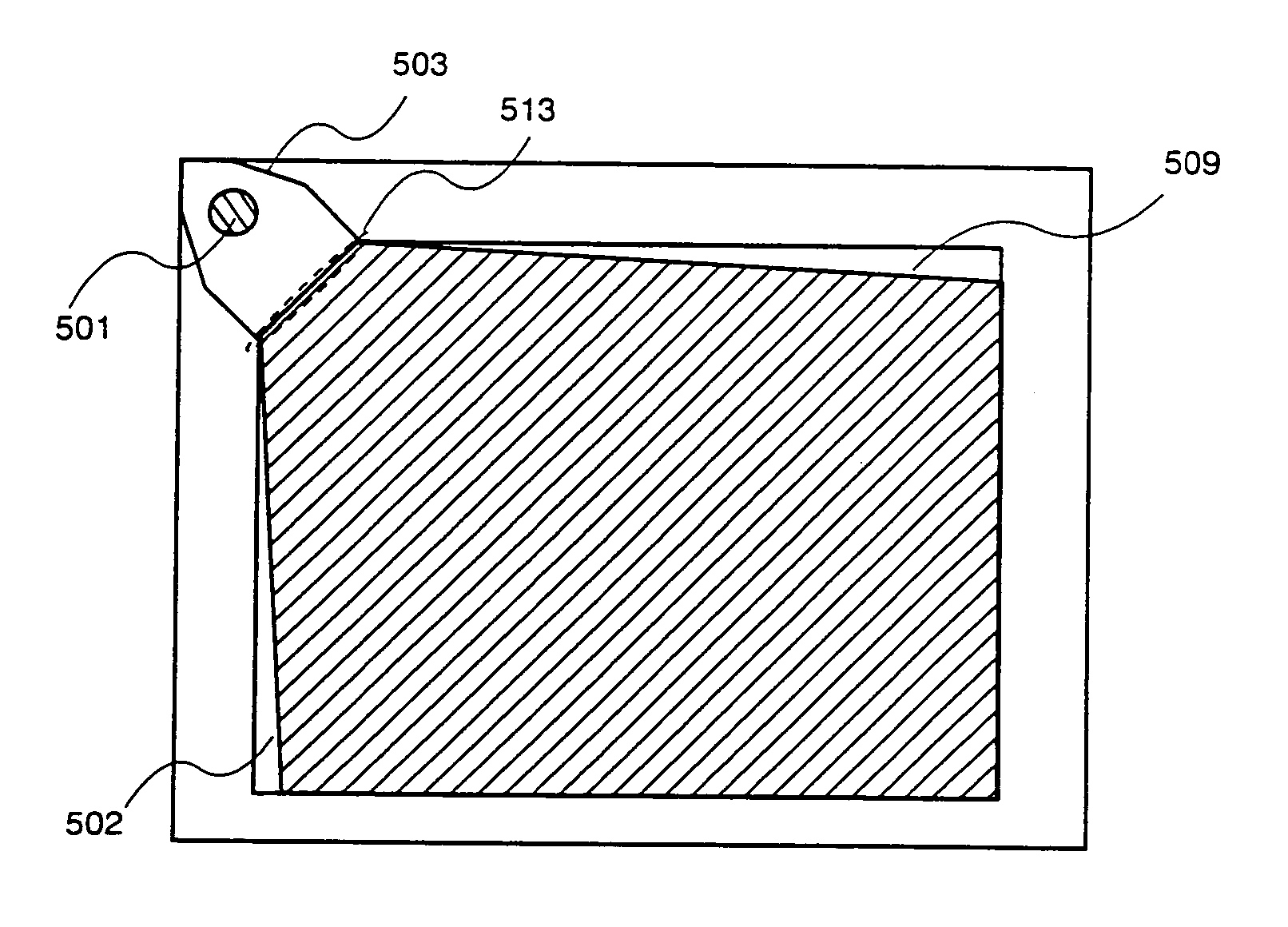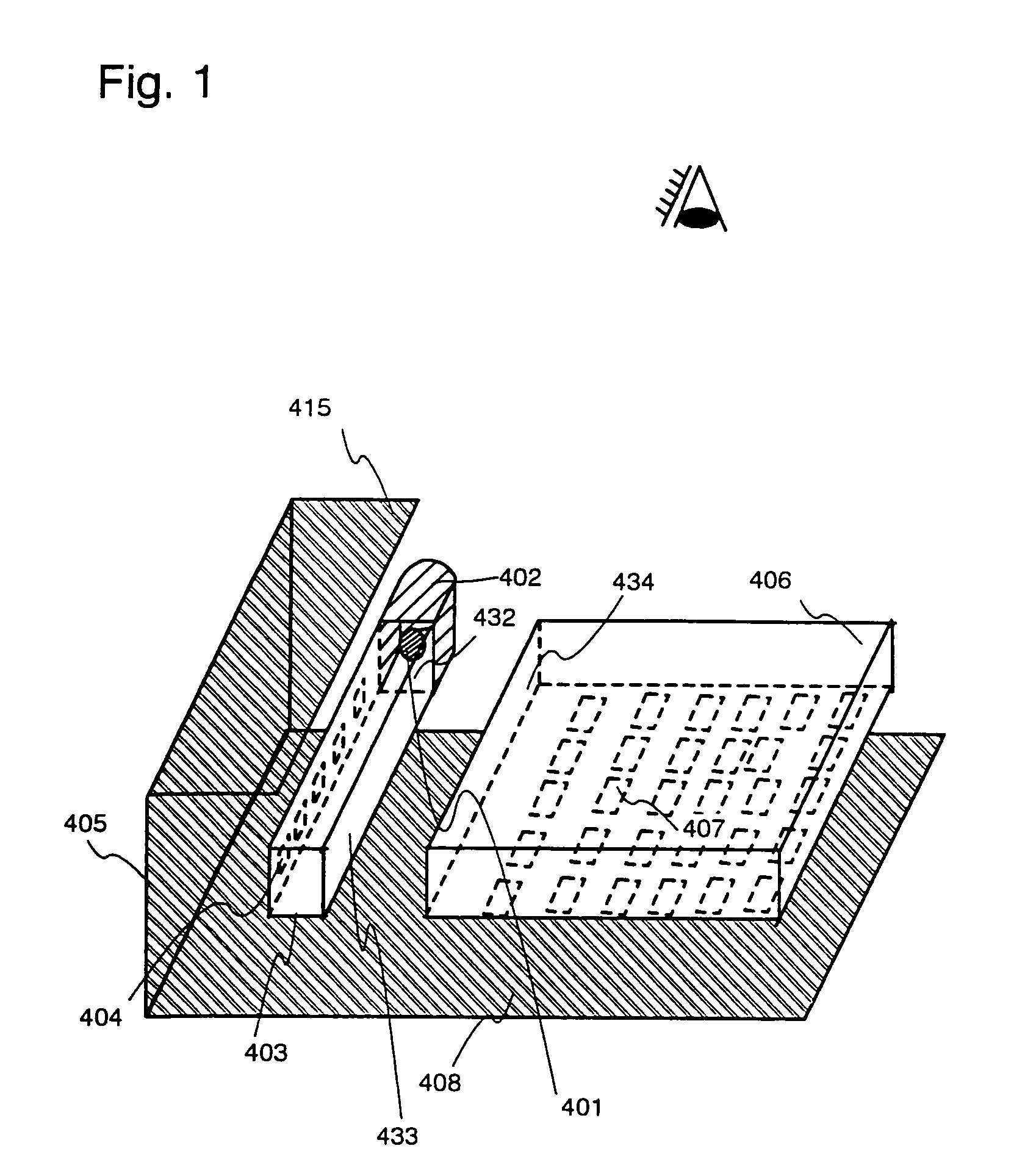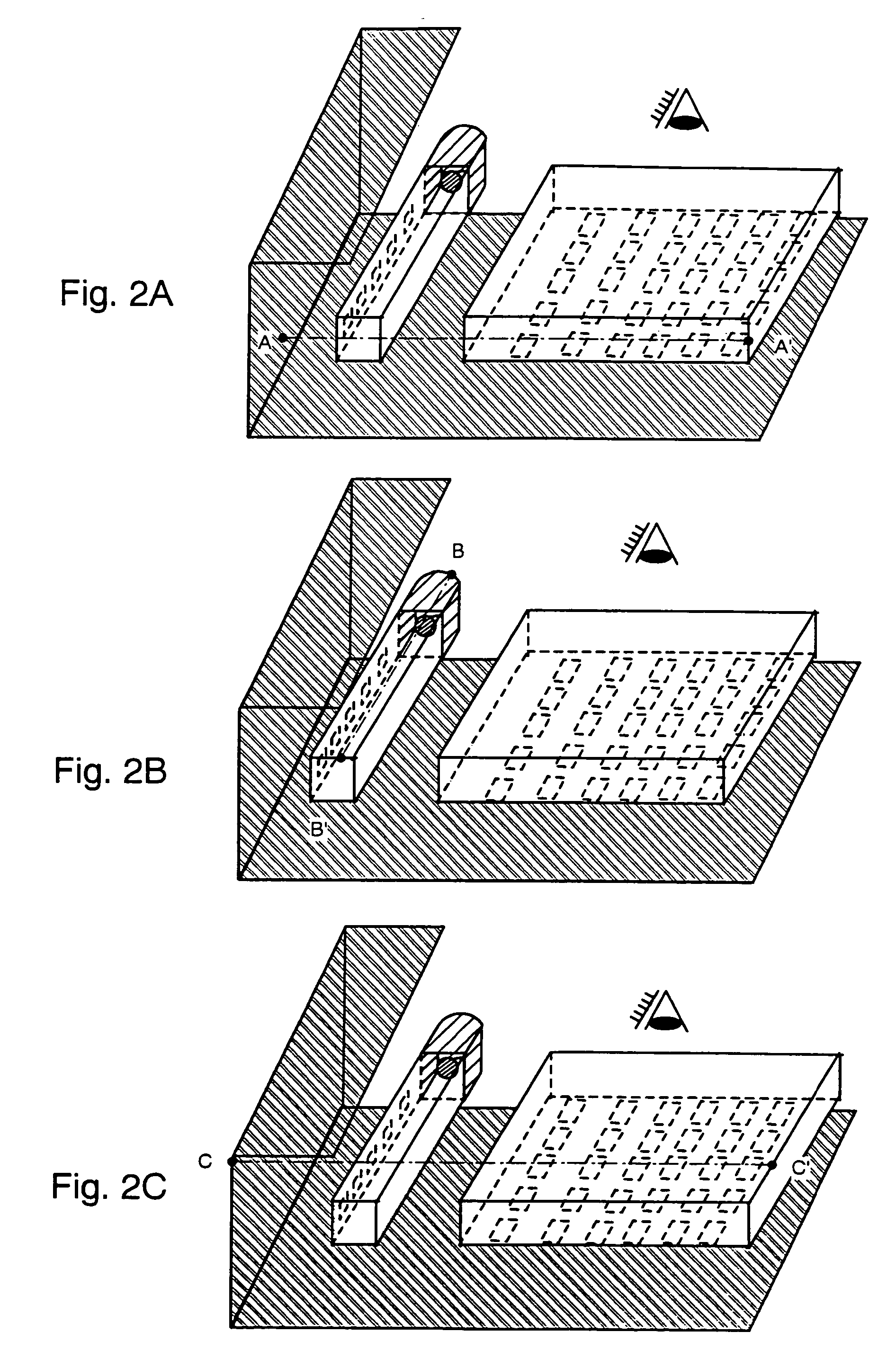Illumination apparatus
a technology of illumination apparatus and back, which is applied in the direction of mechanical apparatus, lighting and heating apparatus, instruments, etc., can solve the problems of uneven brightness, inability to avoid uneven brightness, and point light sources that cannot be converted into uniform plane light sources, etc., and achieves low cost and satisfactory workability.
- Summary
- Abstract
- Description
- Claims
- Application Information
AI Technical Summary
Benefits of technology
Problems solved by technology
Method used
Image
Examples
embodiment mode 1
[0075]In Embodiment Mode 1, the present invention will be applied to a back light of a transmission type liquid crystal electro-optical device. Embodiment Mode 1 will be described with reference to FIG. 1.
[0076]In order to explain Embodiment Mode 1, six surfaces of the light guiding plate are defined as shown in a perspective view of FIG. 19A. More specifically, a surface closer to a viewer is referred to as an upper surface 735. A surface opposite to the upper surface is referred to as a lower surface 736. A surface on which the light emitted from a light source 737 is referred to as an end surface 738. Surfaces perpendicular to the end surface are referred to as side surfaces 739. The other side surface is referred to as a surface 740 parallel to the end surface. The following descriptions with reference to FIG. 1 are based on the above definitions.
[0077]A light emitting diode 401 is disposed on a first end surface 432 of a linear light guiding plate (first light guiding plate) 40...
embodiment mode 2
[0092]The present embodiment mode describes an example in which the present invention is applied to a front light of a reflection type liquid crystal electro-optical device. The embodiment mode is characterized in that a point light source by means of a light emitting diode is converted into a line light source by a linear light guiding plate.
[0093]In order to explain Embodiment Mode 2, six surfaces of the light guiding plate are defined as shown in a perspective view of FIG. 19A. More specifically, a surface closer to a viewer is referred to as an upper surface 735. A surface opposite to the upper surface is referred to as a lower surface 736. A surface on which the light emitted from a light source 737 is specifically referred to as an end surface 738. Surfaces perpendicular to the end surface are referred to as side surfaces 739. The other side surface is referred to as a surface 740 parallel to the end surface. The following descriptions with reference to FIGS. 4, 5A and 5B, 6, ...
embodiment mode 3
[0099]The present invention will be described in Embodiment Mode 3. The present embodiment mode is characterized by the shape of the plate-like light guiding plate. More specifically, in the present embodiment mode, the first side surface of the plate-like light guiding plate on which the light is to be incident is configured to have an angle of 45° with respect to the other side surfaces of the plate-like light guiding plate. The point light source such as a light emitting diode is disposed in front of the first side surface.
[0100]In order to explain Embodiment Mode 3, surfaces of the plate-like light guiding plate are defined as shown in a perspective view of FIG. 19B. More specifically, a surface closer to a viewer is referred to as an upper surface 741. A surface opposite to the upper surface is referred to as a lower surface 742. The remaining surfaces are referred to as side surfaces 743. The following descriptions with reference to FIGS. 10, 11A, and 11B are based on the abov...
PUM
 Login to View More
Login to View More Abstract
Description
Claims
Application Information
 Login to View More
Login to View More - R&D
- Intellectual Property
- Life Sciences
- Materials
- Tech Scout
- Unparalleled Data Quality
- Higher Quality Content
- 60% Fewer Hallucinations
Browse by: Latest US Patents, China's latest patents, Technical Efficacy Thesaurus, Application Domain, Technology Topic, Popular Technical Reports.
© 2025 PatSnap. All rights reserved.Legal|Privacy policy|Modern Slavery Act Transparency Statement|Sitemap|About US| Contact US: help@patsnap.com



